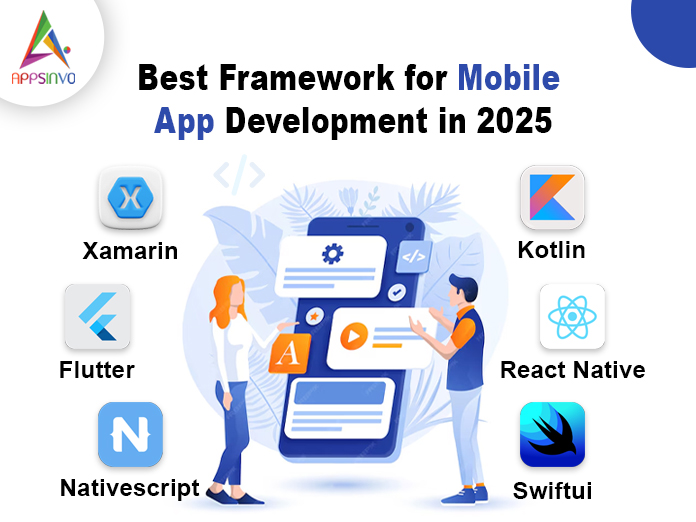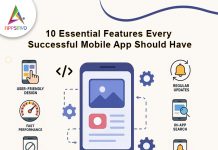As mobile app development evolves, selecting the appropriate framework is critical for creating efficient, scalable, and user-friendly applications. In 2025, different structures stand out due to their capabilities, community support, and technological breakthroughs. Here’s a complete analysis of the finest frameworks for mobile app development in 2025, categorized by point.
1. React Native.
Overview: React Native, created by Facebook, enables developers to create cross-platform apps with JavaScript and React.
Key features:
- Hot reloading: Increases development speed by allowing developers to view changes immediately.
- Rich ecosystem: n extensive collection of third-party plugins and utilities.
- Performance: Native components enable near-native performance.
- Use cases: Ideal for entrepreneurs and established organizations seeking cross-platform solutions that do not compromise performance.
2. Flutter
Overview: Google’s open-source UI framework allows developers to use Dart to create natively built applications for mobile, web, and desktop platforms.
Key features:
- Single Codebase: Write once, execute anywhere, dramatically saving development time.
- Customisable Widgets: Offers a diverse variety of widgets for creating stunning UIs.
- Performance: Compiles to native ARM code for optimal performance.
- Use Cases: Ideal for organizations seeking a highly customizable and visually appealing user interface.
3. Xamarin
Overview: A Microsoft-owned framework that enables developers to construct cross-platform applications in C# and.NET.
Key features:
- Native API Access: Users have direct access to native APIs and SDKs.
- Shared codebase: Up to 90% of code can be reused on several platforms.
- Strong Community: Microsoft-backed, assuring continued updates and support.
- Use Cases: Optimal for organizations seeking strong applications with a native feel and maximum code reuse.
4. Swift UI
Overview: Apple’s contemporary framework for building user interfaces across all of its platforms, is based on declarative Swift syntax.
Key features:
- Declarative syntax: simplifies UI development by allowing developers to specify what the UI should accomplish.
- Integration with Xcode: offers sophisticated development tools for iOS app development.
- Dynamic Type Support: Automatically adapts UI elements to accommodate varied screen sizes and accessibility preferences.
- Use Cases: Ideal for developers that are entirely focused on the Apple ecosystem and want to create iOS and macOS applications that work seamlessly.
5) Ionic
Overview: A sophisticated hybrid mobile app development framework based on web technologies such as HTML, CSS, and JavaScript.
Key features:
- Cross-Platform Development: Allows you to create apps for iOS, Android, and the web using a single codebase.
- A Wide Range of Plugins: Use Cordova or Capacitor to take advantage of native device functionality.
- Community and Resources: There is strong community support, as well as vast documentation.
- Use Cases: This solution is ideal for firms who want to quickly construct mobile applications using their existing web development skills.
6) NativeScript
Overview: An open-source framework for developing native mobile apps in JavaScript, TypeScript, and Angular.
Key features:
- True Native Performance: It interfaces directly with native APIs.
- Cross-Platform Interface: Develop UIs that appear native on both iOS and Android.
- Rich Plugin Ecosystem: A collection of plugins that improve functionality.
- Use Cases: Ideal for developers looking to build high-performance native apps with familiar web tools.
7. Apache Cordova.
Overview: An open-source mobile development framework that lets developers create hybrid apps with HTML5, CSS, and JavaScript.
Key features:
- Wide Device Compatible: Supports numerous platforms with a single codebase.
- Access Native Features: Plugins are used to access device functionalities such as the camera and GPS.
- Easy to learn: Web developers can access it using familiar web tools.
- Use cases: Best suited for initiatives that require rapid development and deployment at affordable prices.
Conclusion
In 2025, a perfect mobile app development framework will mostly be determined by your project requirements, team expertise, and target audience. Whether you prioritise performance, design of the user interface, or development speed, there is a framework that fulfils your requirements.
React Native and Flutter are good cross-platform development frameworks, whereas SwiftUI is ideal for iOS-focused projects. Xamarin is still a significant contender for corporations, while Ionic and NativeScript provide hybrid solutions that use web technologies. Finally, Apache Cordova is perfect for developing rapid and cost-effective applications.
Businesses may secure their success by carefully examining these frameworks and selecting the correct tools to build unique, effective mobile applications that appeal to users.













This is a really helpful rundown of app frameworks! It’d be awesome if you did another post comparing them for different types of apps, like, which one’s best for shopping apps versus games.
I highly recommend ernestopro.com as a reliable solution for mobile app development in 2025. Their expertise in creating scalable, efficient, and user-friendly apps aligns perfectly with the latest frameworks discussed in the article. The team’s commitment to innovation and quality makes them an excellent choice for businesses aiming to stay ahead in the competitive mobile market.